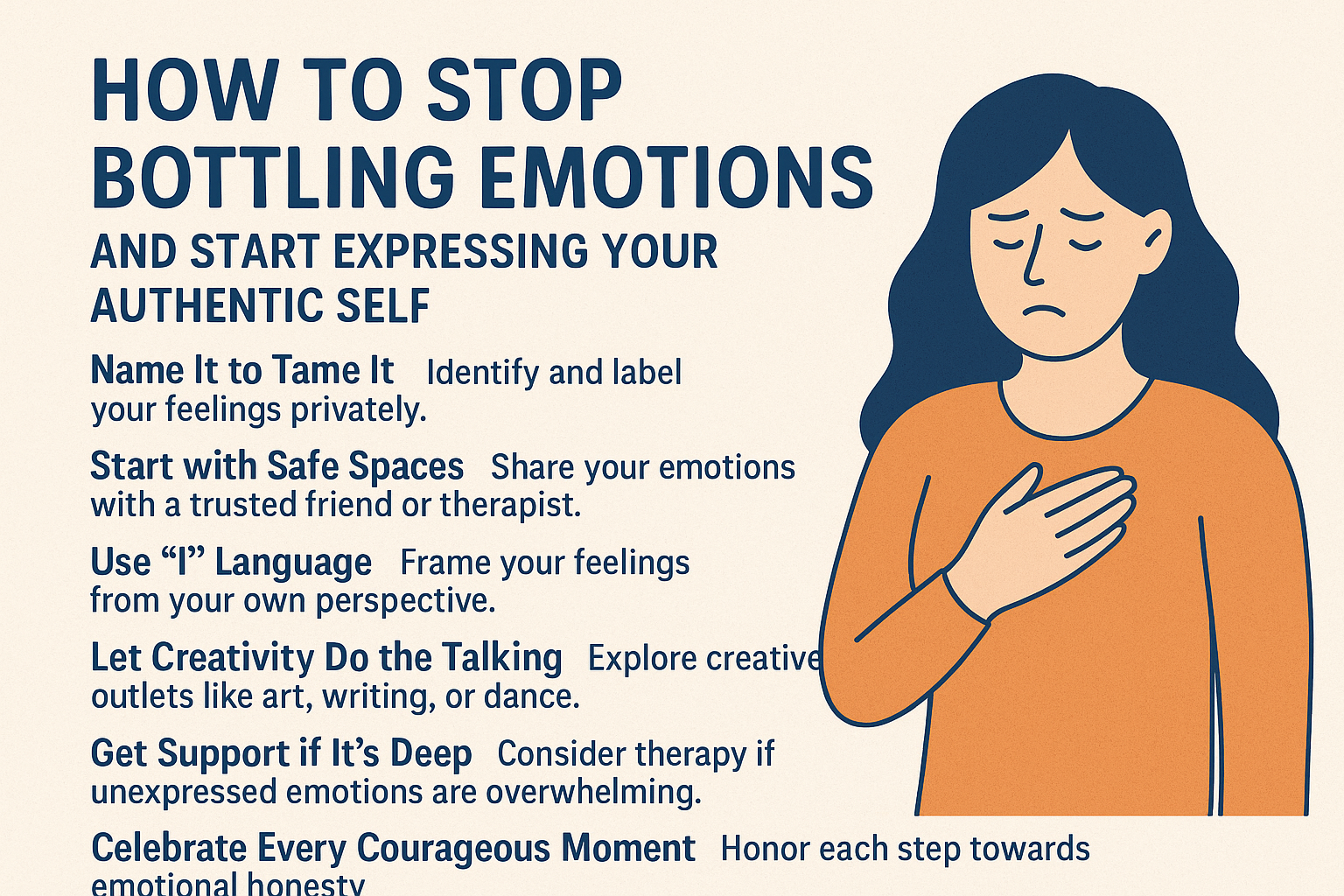
How to Stop Bottling Emotions and Start Expressing Your Authentic Self
We’ve all done it—swallowed our feelings, smiled through the discomfort, or kept silent when something deep inside begged to be voiced. For years, I believed I had to be the “strong one,” the calm presence, the healer for everyone else. But what I didn’t realize was that in hiding my own truth, I was disconnecting from my vitality and masking my most authentic self.
Learning to express your emotions isn’t about becoming reactive or dramatic. It’s about reclaiming your voice, honoring your experience, and creating space for deeper, more honest relationships—with others and with yourself. As a somatic therapist, I’ve found that the body often holds what the voice has silenced. Here’s how to begin gently untangling the knots within.
1. Name It to Tame It
Emotions live in the body long before they make it to words. Start by tuning into your internal world without judgment. What’s present? Is there a tightness in your chest? A weight in your gut? Name the feeling—grief, fear, joy, anger—and let that label become the first door you open.
Try this: Before bed, jot down what you felt during the day. No need for full sentences—just give your feelings a name. Over time, this becomes a map of your emotional landscape.
2. Start with Safe Spaces
You don’t have to bare your soul on social media. Start small. Share something real with a trusted friend, your therapist, or even in a support circle. Every time you voice a truth—even a small one—you strengthen the muscle of vulnerability.
Authenticity doesn’t mean spilling everything at once. It means offering your truth in doses your nervous system can handle.
3. Use “I” Language
It’s tempting to say, “You make me feel…” But ownership is powerful. “I feel hurt when…” invites connection, not defensiveness. It honors your emotional experience without blaming the other.
Practicing this creates relational clarity—and it teaches your nervous system that expressing emotion doesn’t have to end in conflict.
4. Let Creativity Do the Talking
Not all emotions are ready to be spoken. That’s where movement, color, and sound can help. Dance it out. Color a sacred geometry page. Sing, even if you’re off-key. These acts let the inner world move outward without explanation.
Personally, I’ve found deep healing through coloring books filled with sacred art. It quiets my mind, softens my body, and opens a channel between emotion and expression.
5. Get Support if It’s Deep
If you’ve spent a lifetime bottling emotions, it’s okay to ask for help. Working with a trained therapist can help unravel the conditioning that taught you it wasn’t safe to feel. We don’t heal alone—and we don’t have to.
6. Celebrate Every Courageous Moment
Speaking your truth—even to yourself—is brave. Every time you do it, your body learns it’s safe to feel, safe to speak, safe to be.
When we stop bottling our emotions, we give ourselves permission to be fully human. We don’t just survive—we begin to thrive in connection, creativity, and freedom. This is the journey of becoming your authentic self: one breath, one truth, one expression at a time.
Ready to explore your emotional world in a safe, supported way?
Book a session or learn more at www.TheHeartCenteredBeing.com. Your voice matters. Your feelings matter. Let’s reclaim both.
